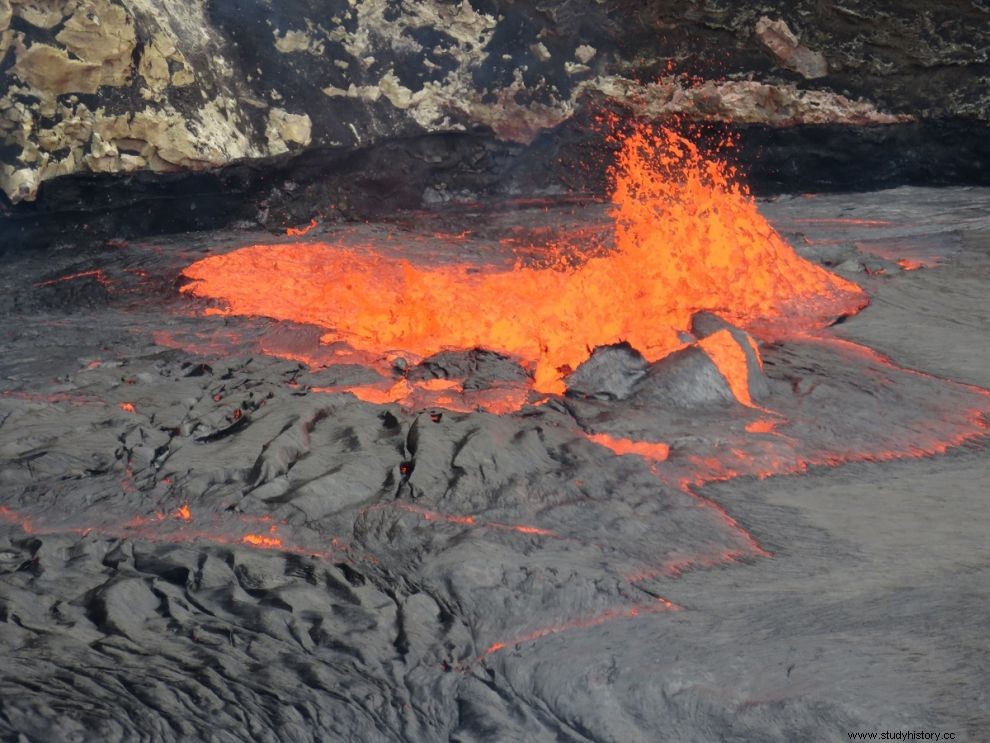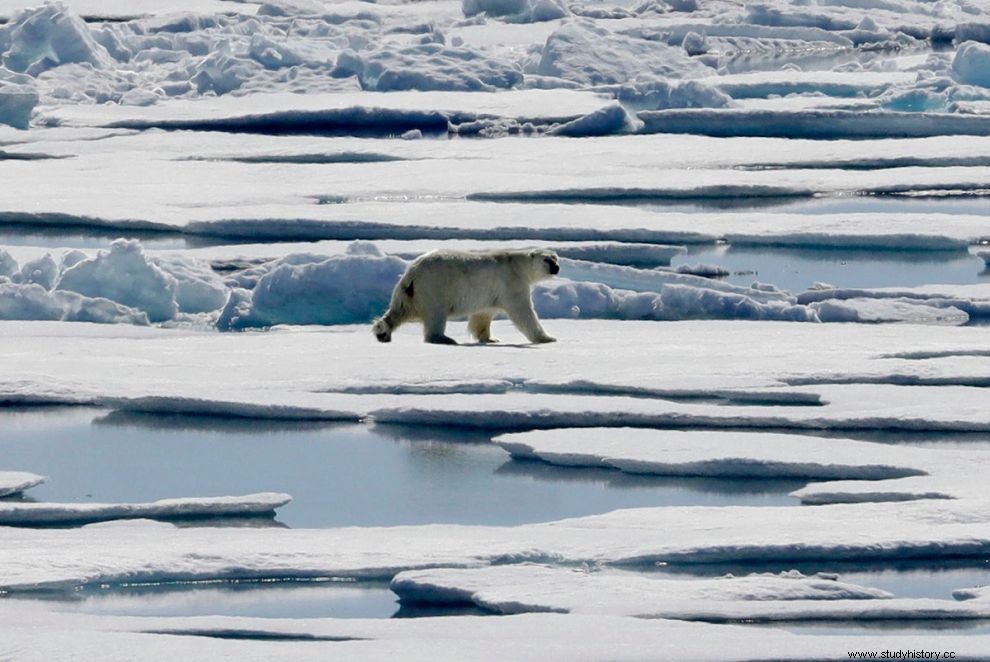Also known as "The Year Without a Summer", 1816 negatively affected the entire world, from the poorest rice farmer in China to the -perpetually in fear of starvation- residents of Ireland. In 1815, Mount Tambora erupted and its aftermath caused droughts, destroyed crops and most importantly, an endless harsh winter.
Volcanic activity has altered weather systems, sparked new diseases, and destabilized entire regimes. Millions of people lost their lives, either directly from the explosion or from the cholera that followed or from a series of factors, completely unexpected, at least in our non-scientific eyes.
See what exactly happened in one of the worst years in world history:
They didn't immediately notice the explosion all over the planet
Indonesia's Mount Tambora erupted in 1815, causing humanity the following year to face one of the most significant geological events in world history. For some scientists, the eruption of Mount Tabora is considered ten times more powerful even than that of Krakatoa in 1883.
However, it took some time before the rest of the world felt the effects of the explosion. It was the years when Europe was reeling from the Napoleonic Wars, the United States was building a new nation, and the Qing Dynasty in China was fighting to hold on to its throne.
But as the huge cloud of ash began to spread across the world, the pressure it began to exert on entire communities could no longer go unnoticed.

The explosion claimed at least 80,000 lives in Indonesia
Analysts disagree on the exact number of people who died in the blast. However, even the most conservative estimates suggest that around 10,000 people died in the initial eruption and another 70,000 in the following months.
Makes sense, considering it was the largest volcanic eruption in modern history, reaching a VEI (Volcanic Explosiveness Index) of 7, when the highest is 8.
The global temperature dropped by almost three degrees Celsius
Although a temperature drop of three degrees may not seem particularly drastic, this change in weather had far-reaching consequences in the year 1816. The ash cloud created by the volcano reached the stratosphere, reflecting incoming sunlight, thus cooling the Earth.
The wind in turn upset the meteorological balance, increasing precipitation over much of the northern hemisphere.
One of the worst Irish potato famines
The most famous Irish potato famine occurred between 1845-1849. However, many primary sources insist that a series of potato famines preceded and struck the country in the 18th and 19th centuries.
So it is believed that the eruption of Mount Tambora caused an endless rain in Ireland that lasted almost eight weeks. This resulted in local crops being destroyed and a famine followed, which in turn led to a typhus epidemic from 1816 to 1819. It is estimated that nearly 100,000 people died during that time.
Cholera epidemic from Bengal
The eruption of the volcano led to a new strain of cholera, particularly resistant. This "new cholera" had mutated due to the weather that changed dramatically in the Bay of Bengal, but also due to chemical changes in the soil. The population could not fight off the germ that targeted the immune system, and the disease quickly traveled throughout Asia.
By the end of the 19th century, the entire world faced the effects of cholera. It cost the lives of millions.
Europe was unprepared for famine due to the Napoleonic Wars
At the height of his power Napoleon Bonaparte seemed unstoppable. He won one battle after another and for a very short time, he managed to dominate most of the European continent. And yet, the eruption of this volcano brought many more changes than even Bonaparte's action.
The eruption caused the circulation of ash, rain and very cold temperatures in Europe. Almost no one was prepared for these effects and food stores proved to be very poorly stocked.
Many European nations had to rely on American imports to avoid starvation, as the strife had almost ceased agricultural cultivation.

Sulphate disrupted monsoons in South Asia
The eruption may have affected people worldwide, but the most dramatic consequences were experienced by those closest to the volcano. For example, the annual Indian monsoons slowed down, leading to a dizzying array of effects such as the cholera epidemic that began in Bengal.
Mount Tambora also emitted a significant amount of sulfate. Historian Gillen D'Arcy Wood explained its impact:
“The huge load of sulphide gases introduced into the stratosphere produced an aerial dust cloud consisting of up to 100 cubic kilometers of debris. This great plume eclipsed the sun, then covered the earth within weeks before drifting towards the poles, wreaking havoc on the planet's meteorological balance for three years."
Climate change marked the exploration of the Arctic
The volcano did not cause a corresponding drop in temperature in the Arctic either. In fact, the warm winds were forced to end up north. Arctic ice melted and formed new paths in the uncharted frozen landscape.
This gave the British Navy, hoping to discover a northern passage, the opportunity to organize several expeditions to the Arctic.
The first of these expeditions set out in 1818 under Captain John Ross, and arrived in the north only to find that the weather had stabilized. The path had already disappeared.
However, in the coming years, explorers from both Britain and other nations will continue to take part in similar expeditions to the frozen north.

The boom was - in part - caused by the Chinese opium trade
China's Yunnan Province faced extreme consequences due to the explosion. Unpredictable cold and rain interrupted the annual rice crop, and desperate farmers turned to poppies - a more reliable crop of plants used to produce opium.
One of the most defining economic conflicts of the 1800s, the Chinese opium trade, was what led to major uprisings that claimed thousands of lives. It also gave birth to the modern "Golden Triangle" of heroin production in Southeast Asia.
An equally painful event could happen again
The planet is home to around 20 active super-volcanoes. These massive magma deposits have incredible potential, and some landforms could prove far more powerful than even those of Mount Tambora. Let alone most supervolcanoes could erupt at any time without having to cause something like an earthquake for example.
Lava emissions of such intensity occur approximately once every hundred thousand years and can significantly affect the climate.
